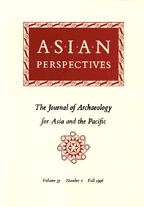Richard Joseph Pearson is a Canadian archaeologist.
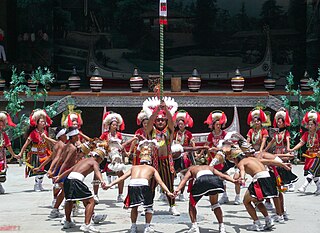
The Austronesian peoples, sometimes referred to as Austronesian-speaking peoples, are a large group of peoples in Taiwan, Maritime Southeast Asia, Micronesia, coastal New Guinea, Island Melanesia, Polynesia, and Madagascar that speak Austronesian languages. They also include indigenous ethnic minorities in Vietnam, Cambodia, Myanmar, Thailand, Hainan, the Comoros, and the Torres Strait Islands. The nations and territories predominantly populated by Austronesian-speaking peoples are sometimes known collectively as Austronesia.
Chester F. Gorman was an American anthropologist and archaeologist.
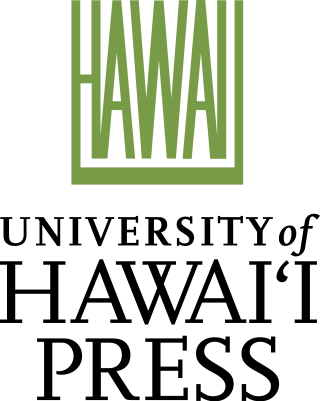
The University of Hawaiʻi Press is a university press that is part of the University of Hawaiʻi.

Oceanic Linguistics is a biannual peer-reviewed academic journal covering research on the indigenous languages of the Oceanic area and parts of Southeast Asia, including the indigenous Australian languages, the Papuan languages of New Guinea, and the languages of the Austronesian family. Monographs on the same languages are published as Oceanic Linguistics Special Publications.
Buddhist-Christian Studies is an academic journal covering the historical and contemporary interrelationships between Buddhism and Christianity. It includes articles, conference reports, book reviews, and sections on comparative methodology and historical comparisons, as well as ongoing discussions from two dialogue conferences: the Theological Encounter with Buddhism, and the Japan Society for Buddhist–Christian Studies. Since 1987 it has served as the official journal of the Society for Buddhist-Christian Studies, a member of the Council of Societies for the Study of Religion.
Mānoa is a literary journal that includes American and international fiction, poetry, artwork, interviews, and essays, including memoirs. A notable feature of each issue is original translations of contemporary work from Asian and Pacific nations, selected for each issue by a special guest editor. Mānoa, meaning 'vast and deep' in the Hawaiian language, presents both traditional and contemporary writings from the entire Pacific Rim. Mānoa is published semiannually by the University of Hawaii Press and was established in 1989.

Wilhelm G. Solheim II (1924—2014) was an American anthropologist recognized as the most senior practitioner of archaeology in Southeast Asia, and as a pioneer in the study of Philippine and Southeast Asian prehistoric archaeology. He is perhaps best known, however, for hypothesizing the existence of the Nusantao Maritime Trading and Communication Network (NMTCN), one of two dominant hypotheses regarding the peopling of the Asia-Pacific region during the Neolithic age.
In a hypothesis developed by Wilhelm Solheim, the Nusantao Maritime Trading and Communication Network (NMTCN) is a trade and communication network that first appeared in the Asia-Pacific region during its Neolithic age, or beginning roughly around 5000 BC. Nusantao is an artificial term coined by Solheim, derived from the Austronesian root words nusa "island" and tao "man, people". Solheim's theory is an alternative hypothesis to the spread of the Austronesian language family in Southeast Asia. It contrasts the more widely accepted Out-of-Taiwan hypothesis (OOT) by Peter Bellwood.
Alfredo E. Evangelista was a Filipino archeologist and former director of the Anthropology division of the National Museum of the Philippines.

The prehistory of the Philippines covers the events prior to the written history of what is now the Philippines. The current demarcation between this period and the early history of the Philippines is April 21, 900, which is the equivalent on the Proleptic Gregorian calendar for the date indicated on the Laguna Copperplate Inscription—the earliest known surviving written record to come from the Philippines. This period saw the immense change that took hold of the archipelago from Stone Age cultures in 50000 BC to the emergence of developed thalassocratic civilizations in the fourth century, continuing on with the gradual widening of trade until 900 and the first surviving written records.

There have been several models of early human migration to the Philippines. Since H. Otley Beyer first proposed his wave migration theory, numerous scholars have approached the question of how, when and why humans first came to the Philippines. The current scientific consensus favors the "Out of Taiwan" model, which broadly match linguistic, genetic, archaeological, and cultural evidence.
Peter Stafford Bellwood is Emeritus Professor of Archaeology in the School of Archaeology and Anthropology at the Australian National University (ANU) in Canberra. He is well known for his Out of Taiwan model regarding the spread of Austronesian languages.
Hispania is a peer-reviewed academic journal and the official journal of the American Association of Teachers of Spanish and Portuguese. It is published quarterly by the AATSP and covers Spanish and Portuguese literature, linguistics, and pedagogy. Hispania publishes in literature, linguistics, and pedagogy having to do with Portuguese- and Spanish-speaking communities, as well as book/media reviews, which are subdivided into Pan-Hispanic/Luso-Brazilian Literary and Cultural Studies, linguistics, language, media, and fiction and film.
Mark James Hudson is a British archaeologist interested in multicultural Japan. His initial areas of specialization were the Jōmon period and the Yayoi period. His later research has focused on areas of Japan outside state control, primarily islands and mountains. He excavated the Nagabaka site on Miyako Island.
Professor Robert Ture Olov Janse was a Swedish archaeologist. He is notable for his excavation work at Đông Sơn between 1935 and 1939. Though he originally argued a viewpoint for the European origins of Bronze Age culture in Vietnam, he reversed himself in support of Chinese origins after he started excavations at Đông Sơn. Janse is characterized as having introduced order into the research of the history of archaeology in Mainland Southeast Asia.
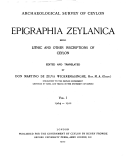
Epigraphia Zeylanica is an irregularly published series that deals with epigraphs and other records from ancient Ceylon. Established in 1904, the series' contents range from individual articles and notes on inscriptions to single-author monographs. Over the last century, Epigraphia Zeylanica has functioned as a key source for the history of ancient Ceylon and its early epigraphic records.
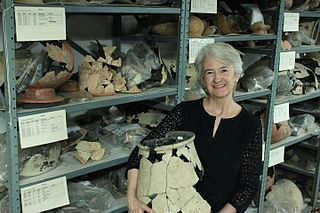
Joyce C. White is an American archaeologist, an adjunct professor of Anthropology at the University of Pennsylvania, and executive director of the new Institute for Southeast Asian Archaeology. Her research primarily concerns decades-long multidisciplinary archaeological investigations in Thailand and Laos covering the prehistoric human occupation of the middle reaches of the Mekong River Basin. She is considered the world's leading expert on the UNESCO World Heritage Site of Ban Chiang, Thailand, and directs an archaeological fieldwork program in the Luang Prabang Province of Laos. She has become a strong advocate of cultural heritage preservation and has served as an expert witness in an antiquities trafficking case for the U.S. Department of Justice.
Pyrenae, Revista de Prehistòria i Antiguitat de la Mediterrània Occidental / Journal of Western Mediterranean Prehistory and Antiquity, is a biannual peer-reviewed academic journal of archaeology published by the Secció de Prehistòria i Arqueologia of the University of Barcelona. The journal focuses a chronological framework that ranges from prehistory to the beginning of the Middle Ages, especially in the Western Mediterranean. The editor-in-chief is Gisela Ripoll.
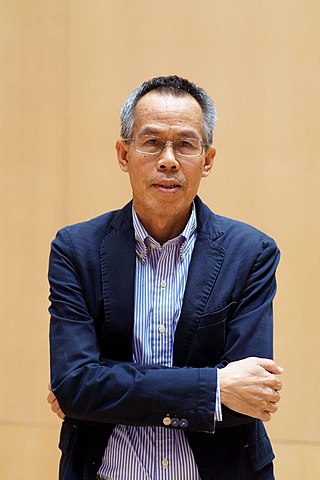
Thanik Lertcharnrit is a Thai Archeologist and Anthropologist and Professor at Silpakorn University. He specializes in southeast Asian archaeology and the public education and perception of archeology, with a focus on public Thai cultural heritage. Professor Lertcharnrit has made many contributions to the field of Cultural Resource Management (CRM), and acted as a pioneering figure and advocate for global public archaeology.
